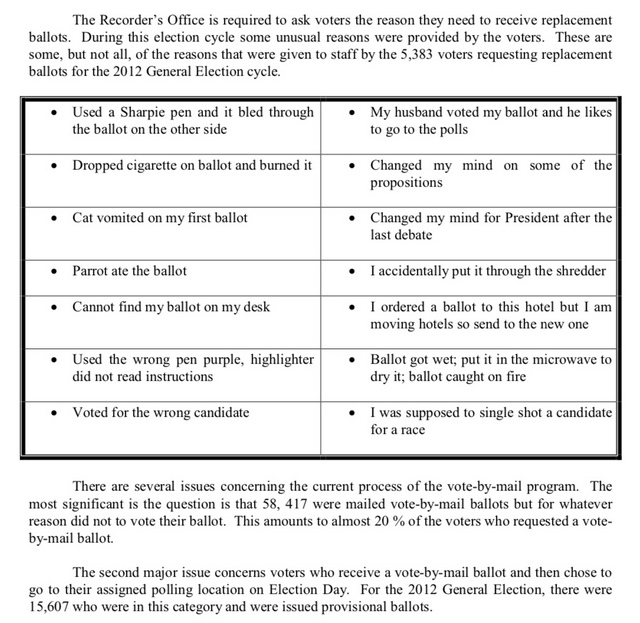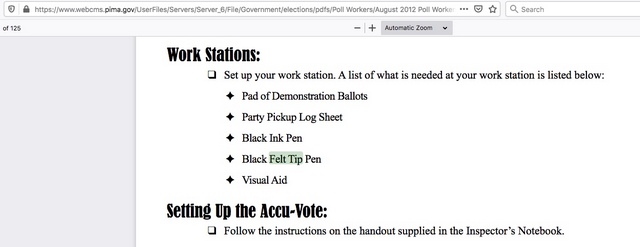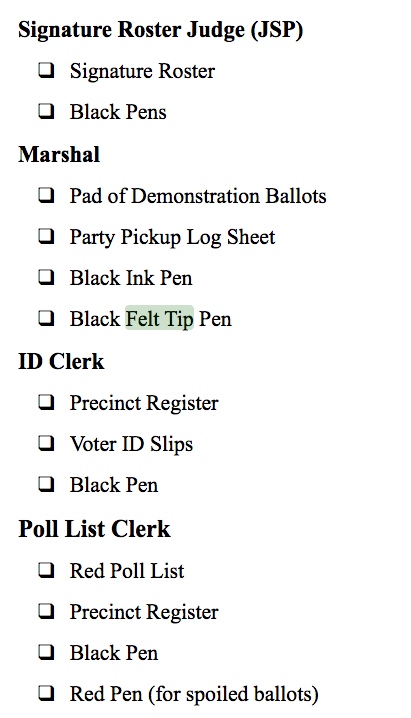


Arizona Ballot Instructions Specify: “DO NOT USE A SHARPIE,” “May Not Be Read By Tabulator”

By Brock Simmons | Published November 5, 2020 at 6:59pm
- As the corrupt county officials across Arizona scramble to downplay Sharpiegate, with the help of a complicit media running cover, it appears as though they are being outsmarted by their own ballot instructions. Their own voters’ guides specify “Do NOT use a sharpie type pen as it will bleed through.”
Steven Crowder brought this to light on his live stream yesterday, around the 3 hour, 20 minute, 7 second mark:
But that’s not all!According to Pima County’s (Tucson area) voter FAQ:
The ballot system used in Arizona is an optical scan system. The ballots are tabulated by optical scan readers. The readers are machines that have been calibrated to read the markings on the ballots. The type of ink that is most likely to be recognized by the reader is blue or black ball point ink. Other colors of ink may or may not be read by the tabulator depending on the ink formula mixture used by the ink manufacturer. The safest choice is a simple blue or black ink ball point pen.
Since ballots frequently have issues or candidates printed on both sides of the ballot, you want to be certain to use a marking device that does not “bleed through” to the other side since this could cause the bleed through marking to be interpreted as a vote. We therefore strongly suggest that you do not use felt tip markers such as magic markers or Sharpies. Stray marks of any kind should be kept to a minimum. Once again, the safest choice is a standard blue or black ink ball point pen.

Oh but it gets better. In 2012, Pima County issued 5,383 replacement ballots. One of the reasons for disqualified ballots that needed replacing? People used felt tipped Sharpies.

But what if the poll workers say there were no regular pens floating around? According to their own guidelines, multiple people are supposed to have regular ball point ink pens along with Sharpies.


The election workers are instructed to use sharpies only when packaging up boxes of envelopes to certify their authenticity.
In a video posted on the Pima County YouTube channel just last month, county recorder F. Ann Rodriguez instructs voters to “use a black or blue ball point pen, no sharpies, to fill in the ovals”:
We’ve downloaded the video to reupload when Pima county disappears it from their channel.Over in Maricopa County (Phoenix area), county recorder Adrian Fontes drafted a letter to the Board Of Supervisors recapping the 2018 elections. He specifically addressed concerns over using Sharpies, that it could lead to machines misreading the ballots:
Sometime in the last few cycles, as I am sure you are well aware, the Department shut off the safeties on the C-400 tabulators for over-votes. The impact of shutting off the safeties is that ballots with stray marks on them, which can be misread by the counting machines as over-votes for some races, are automatically rejected as over-votes. For example, if a voter uses a Sharpie, it often bleeds through the paper and shows up as a stray mark on the opposite side of the ballot. It is not an over-vote but the machine may misread it as such.
Once I was made aware of this situation, I resumed the more historical practice of using the machine safety mechanisms to out-stack those ballots containing extra marks during counting and have bipartisan Central Boards research them by hand to determine if the error is actually an over-vote or a stray mark. Resuming this practice not only allows us to capture an estimated 50,000 more votes, but it returns us to a nationally recognized best practice.
Note that he also mentions that they turned the safeties off. If Sharpies bleeding through could be interpreted as “stray marks” by the machines, and the machines automatically reject stray marks as over-votes, how many Sharpie ballots were rejected and not counted?

In the post 2018 elections report, Maricopa County officials included as part of a voters’ FAQ a section where they say to not use a Sharpie, that it could damage the ballot, and that damaged ballots cannot be read by the machines:Ballots should be filled out with a black or blue ink pen. One bold line connecting the head and tail of the arrow is sufficient for a tabulation machine to count your vote. Do not use a marker or sharpie, since they tend to bleed through and will damage your ballot.
Our tabulating machines cannot read damaged ballots or crossed out selections. There are several options for replacing a damaged ballot. You can vote in person on or before Election Day at a Vote Center. You can also request to get a new ballot sent to you by calling the STAR Center at 602-506-1511, or email the Recorder’s Office at EVreq@risc.maricopa.gov. This request must be made by 5 p.m. on the 11th day before Election Day.

- Finally, though a bit outdated, a 2008 Maricopa County voters guide specified to NOT use a marker type that bleeds through.
